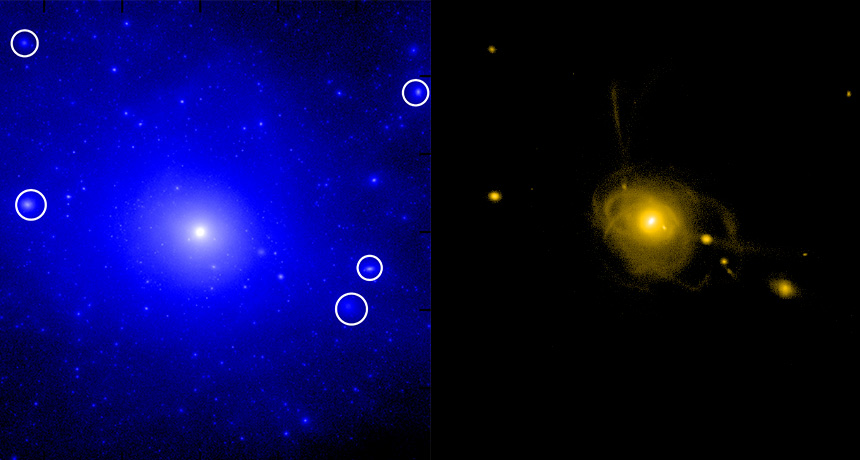
VIRTUAL GALAXY New simulations show that supernovas whittle away at the sea of dark matter surrounding our galaxy (left), leaving only a few blobs that are massive enough (circled) to create satellite galaxies. The image on the right, from the same simulation, shows where stars end up forming.
The FIRE project







